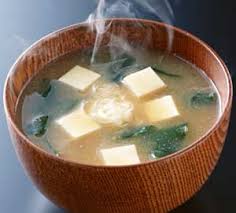From NISLAPP – Green Electricity or Green Money?
November 4th, 2014
Released yesterday by National Institute for Science, Law, and Public Policy (NISLAPP) (never heard of it before, need to do some checking):
Green Electricity or Green Money?
Why is this a question? We know it’s a problem. But this report focuses on things like “Smart Meters” and doesn’t dig into the the even worse toadying for coal gasification and other harebrained promotional schemes of these orgs.
Here in Minnesota, the money goes to Minnesota Center for Environmental Advocacy, Fresh Energy f/k/a ME3, Izaak Walton League and its former program now independent 501(c)(3) Wind on the Wires (conveniently separate since just after election, when Bill Grant was appointed Deputy Commissioner of Commerce in charge of all things energy)(oh, and Nancy Lange appointed to Public Utilities Commission). And then there’s RE-AMP. There’s so much money flying around for promotion of transmission and coal gasification.
Bill Clinton toadying for transmission
WOW’s devil we know… ummm… WOW!!!
Walton’s Bill Grant – Deputy Commissioner of Energy?
Wind up to ELPC Transmission Strategy Meeting
AAAAAAAAAAAAARGH… back to work…
MISO request to FERC to terminate GIA
November 3rd, 2014
Yes, MISO is at it again, no, not the good MISO as above, but the other MISO, the Midcontinent Independent System Operator, Inc. Once again, they’re asking FERC for termination of a Generation Interconnection Agreement (GIA) for the failed and revoked Goodhue Wind Project, the part with MISO queue number H062 (it’s been assigned Docket No. ER15-254-000).
This is the docket that never ends, but keeps inching toward the cliff. For all intents and purposes it’s over, but here’s another housekeeping detail. It’s permits are revoked, the Minnesota Public Utilities Commission has closed the docket… but wait… didn’t they already do this in August?
Mastic’s H061 & H062 Interconnection Agmts TERMINATEDAugust 18th, 2014
Here’s the FERC Order in docket ER14-1684-000, about H062 from then:
20140606-3034(29458634)_OrderAcceptingNoticeOfTerminationH062
I’ve asked the MISO attorney for clarification. Will report back on any response.
Has Peter Mastic cleared out his office?
Do you have a Living Will?!?!
November 3rd, 2014
Yes, that’s a headset — don’t be using a cell phone without one, DOH!
It’s almost winter, plants are shriveling up, we’ve just celebrated Dia de los Meurtos, and now is the time! Make or revise your Living Will, your Health Care Declaration. Just do it!
It’s my belief that having gone through this with parents, and so many times with our dogs and cats, and with clients, it’s a lot more clear how I’d like to wrap up this life and what I want to avoid. It’s easier to talk about it because we’ve had to make these decisions, look at quality of life, what a “good life” and a “good death” mean, what efforts and torture we’d want to go through, and I’m pretty clear: ALAN, CALL THE VET!!!
Recently an advocate activist cohort, Jan Greenfield, died of lymphoma. Most people have also heard of Brittany Maynard, who at 29 was diagnosed with terminal brain cancer and opted out of treatment and life a couple days ago. Ted Kennedy, Lee Atwater, Janet Johnson… The list goes on, cancer is everywhere, particularly as we get older. And dear Kady, well, I found another tumor on her yesterday…
There’s an editorial in the STrib that I recommend, “To treat or not to treat a brain tumor,” about a couple’s journey through brain cancer, and it’s important particularly for this one section on how doctors view treatment and death:
Doctors are more familiar not just with death but with the foibles of trying to flout it.
Think about that… “They know enough about modern medicine to know its limits.”
Here’s some information on Living Wills, a/k/a Health Care Directives. Don’t wait — take time before year end to wrestle with your mortality, your thoughts and choices, so that those around you know what you want and won’t have to guess. Talk with your “decider” so that you are confident they understand your wishes, and more importantly, can and WILL advocate for you if necessary — not everyone can do it. Make provisions for your animals, line up a guardian and let the neighbors know — they’re the ones on the scene — and set aside a little fund for their care. And clean the house so they won’t have to!!! (no really, figure out what to do with all those files and books and tools! That’s too much to dump on anyone.)
Questions and Answers about Health Care Directives – Minnesota Dept. of Health
Here are some examples, and your health care provider may have their own version. Talk to your trusted medical minds and go over options. Make some decisions so that others can know and act. From the Twin Cities Medical Society:
David Schultz on Risk Management for Nonprofits
November 2nd, 2014
Risk Management for Nonprofits
David Schultz, Hamline Professor
Tuesday, November 11, beginning at 6 p.m.
2918 North Service Drive, Red Wing, MN
Free and open to the public
Bring your appetites to learn and for Mexican food (cost on you)
I first became aware of David Schultz’s expertise in nonprofit fiduciary responsibility when I read his op ed in the STrib when the misdoings of Community Action of Minneapolis came to light. This was a major issue recently on the Mpls. yak-yak list, and reminded me of several experiences I’ve had on various Boards, and in nonprofits and others, and have unfortunately seen in other community and client boards as well. After reading his commentary, the tip of the iceberg of information that a board member needs to know, I extended an invitation to Schultz to come to Red Wing for area nonprofit board members and anyone interested on learning about what it means to be a member of a Board. A big thanks to David Schultz for his willingness to come to Red Wing and share his expertise.
After sending preliminary info out, a board member from another Red Wing organization contacted me and said, “Is the presenter the same David Schultz who appears on Almanac as a political analyst? If so, he’s one of the best!” Yes, indeed he is! One of her board had brought Schultz’s STrib piece to their last board meeting, and they’re ramped up and ready to go. There’s a need here — let’s get informed!
Here’s Schultz’s view on Board responsibility and the Community Action case:
Nonprofit boards are no place for light duty
Being a board member is an active task, not for the faint of heart. There is a duty to show up — to assure the operation has adequate funding, that members be informed, and if there are problems, to stand up and correct the problems. Here’s the pamphlet from the Office of the Minnesota Attorney General on Board Fiduciary Responsibility.
Schultz is a Professor at Hamline and has a C.V. that shows he’s got intense experience in many areas, far beyond the political analysis and issues I’d known about. His work teaching and training for nonprofits is part of a wide ranging career including housing issues (just ordered a copy of his book “Evicted!” on eminent domain) and ethics.
And, yes, David Schultz is coming to Red Wing! Join us at Fiesta Mexicana, for “Risk Management for Nonprofits.” Tuesday, November 11, starting at 6 p.m.

From the STrib:
Nonprofit boards are no place for light duty
In the case of Community Action of Minneapolis, oversight broke down at personal, internal and external levels.
Look what AWEA wants for us!
November 1st, 2014
There’s the Forbes article about American Wind Energy Ass (AWEA) advocating for this massive mess of new 765 kV lines.
Experts: Reducing Carbon Emissions and Increasing Grid Reliability are Doable
Experts? Ummmm, AWEA? No, they are NOT transmission experts, they are only expert in doing what their masters pay them to do. Here’s their “vision” from a couple of years ago:
Report – Update to the Superhighways report that AWEA’s Michael Goggin wrote in fall 2013.
In Minnesota, there’s one paralleling the CapX 2020 line, then another cutting the state in two from Big Stone to the Metro, and another from Split Rock to Adams along I-90. Who the hell do they think they are to advocate for this overkill of transmission? And note that in the Dakotas, as always, they start at the big coal plants. Infrastructure like this is the best way to assure coal never shuts down, adding capacity instead of shutting coal down and using that capacity. And if they do it this way, then they can run our coal plants forever. Oh, right… this is the plan AEP supports.
First and foremost, remember that this is about economics — money and profit from building transmission and providing transmission service — the grid IS electrically reliable, so says NERC in its latest State of Reliability 2013 Report:
And here’s the NERC Report (one should be due out soon, used to be October, but they’ve pushed it back):
What strikes me is that so many are willing to believe that the electric grid is not “reliable” and are willing to attribute economic issues like “congestion” to claims that the system is not reliable. And then there’s their successful effort to shift cost allocation so that the generators no longer pay for transmission necessary to access and safely operate the grid. In the past, generators paid, but then in the gas plant surge over a decade ago, so many were built without transmission upgrades that we were in transmission deficit, evidenced in the 2001-2004 SW MN 345 kV Four Certificates of Need (MN PUC Docket 01-1958). Check this TLTG Table, click for a larger version:
 For their 1-H option, the one that the enviros agreed to in this project, acquiesced to (remember, this was the project where they got a group together and asked “What would it take to support this project?”), the system starts out with a 1475 MW deficit. It’s not until they’ve fixed some long standing problems, such as the sagging Wilmarth line, and the FT. CALHOUN INTERFACE which is in the base case (!!!!), and after spending over $138 million including their wide ranging “base case” of necessary fixes, that they start actually adding some system capacity. DOH! Give me a break…
For their 1-H option, the one that the enviros agreed to in this project, acquiesced to (remember, this was the project where they got a group together and asked “What would it take to support this project?”), the system starts out with a 1475 MW deficit. It’s not until they’ve fixed some long standing problems, such as the sagging Wilmarth line, and the FT. CALHOUN INTERFACE which is in the base case (!!!!), and after spending over $138 million including their wide ranging “base case” of necessary fixes, that they start actually adding some system capacity. DOH! Give me a break…
The real problem is failure to make those added generators pay for fixing the system impacts, and then the desire to add wind projects without making them pay for system impacts, and more importantly, of wanting to add wind on top of the existing coal generation, without removing the coal which would make plenty of room for wind. The price of their wanting to “find a way forward for coal.”
American Wind Energy Ass, how dare you. This one’s for you:
From AWEA’s 2012 IRS 990 (the most recent one on Guidestar), p. 25 and 29:







